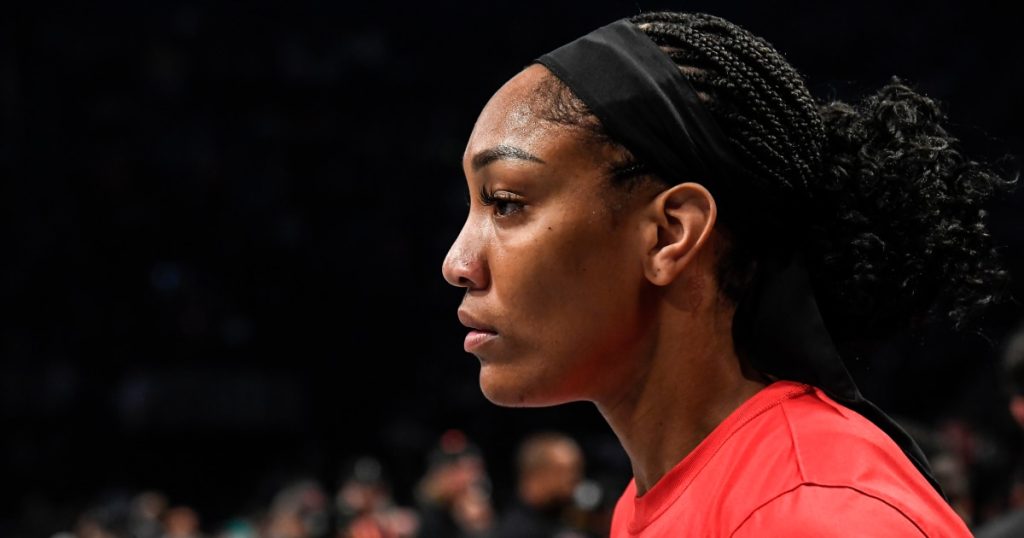After the 2024 WNBA draft, there was an uproar over the pay gap between the women’s league and the NBA, particularly in relation to the expected salary of No. 1 pick Caitlin Clark. A’ja Wilson, a former WNBA No. 1 pick and current player for the Las Vegas Aces, commented on the issue at the Time100 gala on the red carpet. Wilson acknowledged that the pay gap has been a long-standing issue, but emphasized the importance of players advocating for themselves and having supporters who are invested in the well-being of athletes.
Clark is set to make $76,535 in her rookie season with the Indiana Fever, based on the WNBA’s rookie wage scale. In contrast, Victor Wembanyama, last year’s NBA No. 1 pick, earned $12.1 million in his rookie season. Despite the discrepancies, Wilson remains hopeful that change is on the horizon, especially with the current momentum leading into the WNBA season. Wilson expressed optimism that the situation will improve for female athletes in the future and believes that the pay gap could be addressed.
The NCAA Women’s Tournament experienced record viewership numbers this year, with the South Carolina Gamecocks-Iowa Hawkeyes women’s final surpassing the viewership of the men’s UConn-Purdue game by over 4 million views for the first time in history. Clark’s popularity has generated increased interest in women’s basketball, which Wilson finds encouraging. As a two-time WNBA champion, five-time All-Star, Olympic gold medalist, and Time100 honoree, Wilson has been at the forefront of this movement towards closing the wage gap in professional sports.
In 2018, when Wilson was the No. 1 draft pick for the Las Vegas Aces, she signed a 4-year contract worth $232,178, averaging $58,045 annually. Wilson highlighted the importance of action in addition to dialogue to bridge the pay gap between the NBA and WNBA. Investing in women’s sports, increasing viewership, selling more jerseys, and attracting more fans to games are critical steps towards achieving pay parity. Experts suggest that growing viewership and attendance can lead to larger TV contracts for the WNBA, eventually resulting in higher salaries for players.
The current media rights contract for the WNBA, set to expire in 2024, pays the league around $60 million per year. In comparison, the NBA earns $2.7 billion annually from a $24 billion television deal. The NBA is currently negotiating a new media rights deal that will take effect after the 2024-2025 season. Increasing viewership, attendance, and overall interest in the WNBA are essential for driving up salaries and closing the pay gap with the NBA. Wilson and other advocates are working towards creating a more equitable sports landscape for female athletes and securing a brighter future for women’s basketball.


